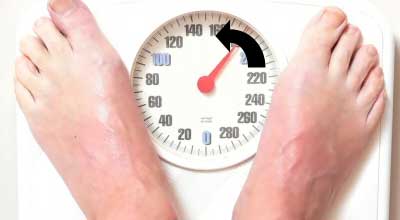These are my top five tips for reversing diabetes.
1. Reduce your weight
Weight control is a powerful key to the reversal and prevention of diabetes. Type 2 diabetes is directly linked to obesity and diets rich in sugars, refined carbohydrates and fats. I encourage you to lose weight if you are seeking to prevent diabetes. Know this, however: If your motive for losing weight is for any person other than yourself, the odds of failure are high. You should be doing this for yourself, to make you healthy, not to please someone else. Making this choice will empower you to lose weight by developing new and healthy habits.
2. Shrink your waist
You need to consider this as a separate need from weight loss because reducing your weight will not necessarily take care of this problem. The larger your waist, the greater your chances of having Type 2 diabetes. A 13-year study of more than 27,000 men published in the·American Journal of Clinical Nutrition·discovered that a waist size of 34 to 36 inches doubled diabetes risk, a waist size of 36 to 38 nearly tripled the risk, a waist size of 38 to 40 was associated with five times the risk, and a waist size of 40 to 62 was associated with a whopping 12 times the risk.
3. Maintain a proper diet
I’m not a proponent of dieting. However, with the program I call my Rapid Waist Reduction Diet, I have helped countless patients over the years to lose weight as the first step in managing and even reversing their Type 2 diabetes. It requires a physician’s supervision, but once you have adjusted to a healthy eating plan, you can add nutrients and supplements to your diet to help control blood sugar in a systematic, natural way. Multivitamins, vitamin D, chromium, alpha lipoic acid, cinnamon and omega-3 fatty acids help fight Type 2 diabetes.
4. Exercise regularly
An estimated 80 percent of Type 2 diabetes cases are preventable with diet and exercise. I typically have patients with insulin resistance exercise five or six days a week for at least 30 minutes a day. If a person has Type 2 diabetes, I may increase the length of their daily aerobic exercise to 45 to 60 minutes, for five or six days a week. I also place patients with Type 2 diabetes on a strengthening program so they can build more muscle tissue to increase their number of insulin-binding sites. Consult a health professional before you begin a new exercise program.
5. Reduce your stress
Stress reduction is crucial in helping control diabetes since a high level of cortisol—the main stress hormone—is associated with increased belly fat, elevated blood sugar and increased insulin levels. Up to 90 percent of doctor visits are prompted by stress-related ailments! Start by relieving personal stress in these everyday ways: De-clutter your house, office or car; reevaluate and prioritize your deadlines; avoid unnecessary competition (finding the perfect parking spot or weaving through traffic); single-task more, multitask less; journal your feelings.
Don Colbert, M.D., is board certified in family practice and anti-aging medicine and an expert on integrative medicine. He is the medical director of Divine Health Wellness Center in Orlando, Fla., and the nonprofit Harvest Time International Medical Center for the underprivileged. Dr. Colbert is also a New York Times best-selling author whose latest book, Reversing Diabetes, released in March.











































